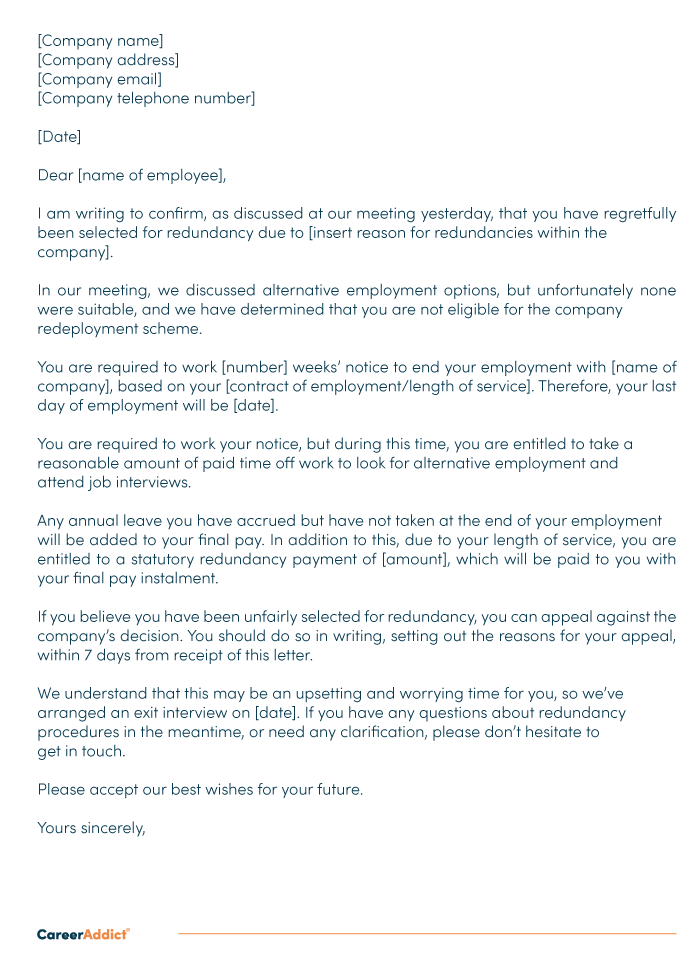Who Pays Redundancy Money? A Comprehensive Guide for Companies and Employees
Who Pays Redundancy Money? A Comprehensive Guide for Companies and Employees
Blog Article
Investigating the Interaction Between Company Redundancy and Business Adaptability for Future Development
In the vibrant landscape of today's service world, the detailed connection between firm redundancy and organizational flexibility becomes an essential variable for sustained development and success. Business often encounter the challenge of striking a fragile balance between keeping a level of redundancy to minimize dangers and cultivating versatility to react swiftly to the ever-evolving market needs. This fragile interplay holds the vital to not only enduring in rough times yet also prospering in the face of uncertainty. As we check out the complex dimensions of this interaction, intriguing understandings right into how organizations browse these complexities to lead the means for future growth await.
Value of Business Redundancy
Firm redundancy is an essential element that enhances business resilience and mitigates operational risks. By including redundancy actions within the organizational framework, companies can better endure unanticipated interruptions and changes in the organization setting. Redundancy works as a critical barrier, permitting firms to adjust and react successfully to unforeseen difficulties without compromising vital operations.
One key aspect of the significance of company redundancy is its duty in making certain connection throughout times of dilemma. When confronted with unexpected adjustments or emergencies, repetitive systems, sources, or workers can action in to preserve crucial features and protect against prevalent interruptions. This continuity not just safeguards the firm's track record and customer trust fund yet likewise lessens financial losses and functional downtime.

Approaches for Business Adaptability

Developing versatile organizational structures that allow for fast changes to market characteristics and customer needs is important for staying competitive in a swiftly progressing atmosphere. By proactively determining potential disruptions and opportunities, companies can proactively adjust and flourish in an ever-changing organization landscape.
Harmonizing Redundancy and Versatility
Accomplishing an unified equilibrium in between functional redundancy and organizational versatility is paramount in navigating the intricacies of a dynamic company setting. Striking the best equilibrium in between redundancy and adaptability is a delicate procedure that calls for a deep understanding of the organization's goals, industry characteristics, and threat tolerance.
To achieve this balance, business require to carry out routine analyses of their procedures to recognize locations where redundancy is essential for threat reduction and where flexibility can drive development and growth. Executing flexible structures, cultivating a society of continual understanding and renovation, and urging open interaction throughout all degrees of the organization are essential techniques to harmonize redundancy and adaptability effectively. By aligning these two vital aspects, firms can position themselves for sustainable development and success in an ever-changing organization landscape.
Instance Research Studies on Adjustment Success
In taking a look at circumstances of effective organizational adaptation, it ends up being obvious that the interplay between operational redundancy and flexibility is a specifying factor in shaping resilient services. A DVD rental solution, Netflix showed impressive flexibility by transitioning into a streaming platform when digitalization interrupted the market. These situation researches emphasize the value of functional redundancy paired with business flexibility in cultivating lasting development and competition.
Building Durability for Future Growth
Building durability for future growth requires a tactical alignment of operational procedures with market characteristics and arising patterns. Business must adapt Discover More to changing environments by cultivating a society of adaptability, advancement, and constant enhancement. Resilience involves not just recuperating from problems yet also proactively getting ready for future difficulties. One crucial facet of building strength is purchasing robust danger administration techniques to minimize possible interruptions. This includes circumstance preparation, branching out supply chains, and developing backup plans for various contingencies (who pays redundancy money).
Furthermore, cultivating strong partnerships with stakeholders, such as clients, have a peek at this website staff members, providers, and the area, is necessary for maintaining and weathering unpredictabilities trust and assistance throughout rough times. Reliable communication and transparency play an essential function in structure resilience, as they assist promote and align expectations cooperation in navigating uncertainties.
Moreover, organizations need to focus on learning and growth initiatives to upskill workers and furnish them with the necessary tools to adapt to altering conditions. By investing in their workforce, business can boost their versatility and dexterity, ultimately enhancing their durability for lasting future development.
Conclusion

In the dynamic landscape of today's business globe, the elaborate partnership between business redundancy and organizational versatility arises as an important variable for sustained development and success. Firms typically encounter the challenge of striking a delicate equilibrium between keeping a degree of redundancy to alleviate dangers and cultivating adaptability to respond quickly to the ever-evolving market needs.To achieve this balance, business require to perform regular evaluations of their operations to recognize locations where redundancy is necessary for danger reduction and where flexibility can drive innovation and growth.In final thought, the interaction in between firm redundancy and organizational adaptability is important for future development. Structure durability via a mix of redundancy and adaptability will guarantee that business are prepared for the difficulties of the future.
Report this page